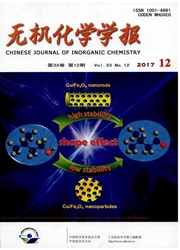

 中文摘要:
中文摘要:
本文综述了包括UiO-66、UiO-67和UiO-68在内的UiO系列金属一有机骨架(MOFs)材料的合成方法、结构特点及各类应用。系统介绍了利用包括扩散法、溶剂热法、微波辅助法、机械研磨法、持续流合成法及电化学合成法等方法合成UiO系列MOFs材料的反应条件、产物特征及优缺点。UiO系列MOFs因稳定的Zr—O键及超高的配位数而具有超高热稳定性和化学稳定性等,其在化学催化、光催化、气体吸附、气体分离、液相吸附有机污染物、荧光、传感、医学和电容器等方面均具有十分广泛的应用。同时,本文还根据UiO系列MOFs材料的研究现状对其未来发展趋势进行了展望。
 英文摘要:
英文摘要:
The syntheses methods, structure characteristics and various applications of UiO series of metal-organic frameworks (MOFs) including UIO-66, UIO-67 and UIO-68 were reviewed. The syntheses methods of UiO series of MOFs like evaporation, solvothermal method, microwave-assisted synthesis, mechanochemical synthesis, continuous flow method, and electrochemical synthesis were introduced. The detailed reaction conditions, the compositions and structures characteristic of the final products, and the advantages/disadvantages of above-stated syntheses methods were analyzed. UiO-MOFs possessed both ultrahigh thermal stability and chemical stability resulted from their strong Zr-O bond and high coordination number of Zr(IV). Considering UiO-MOFs exceptional porosity with uniform but tunable pore sizes, incredibly high internal surface areas and the active Zr-O clusters, they had been used extensively in many research fields like catalysis, photocatalysis, gas adsorption, gas separation, adsorptive removal of organic pollutants in wastewater, medical, capacitor and so on. Finally, the research trends of UiO-MOFs are prospected.
 同期刊论文项目
同期刊论文项目
 同项目期刊论文
同项目期刊论文
 期刊信息
期刊信息
